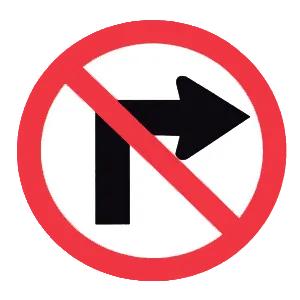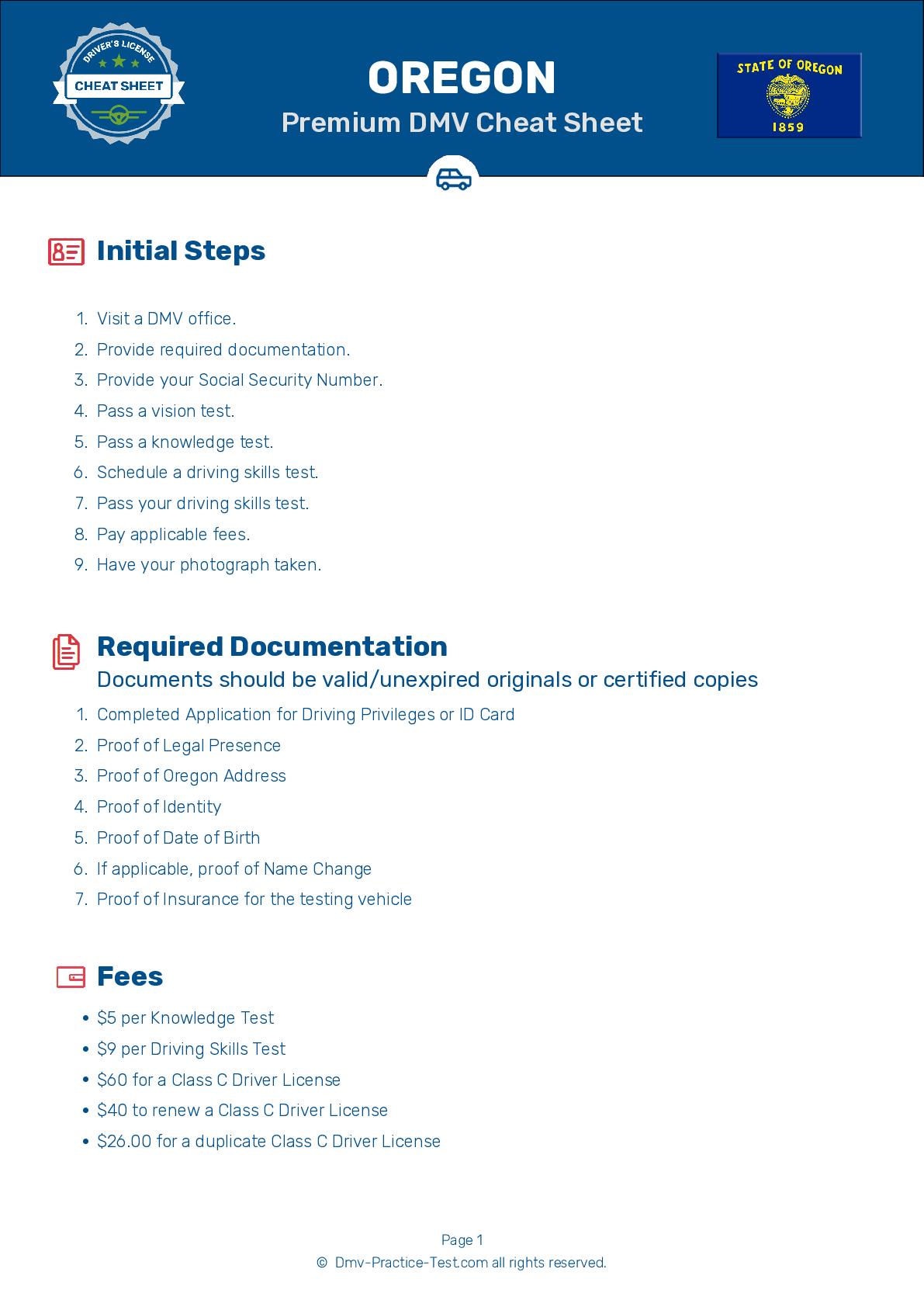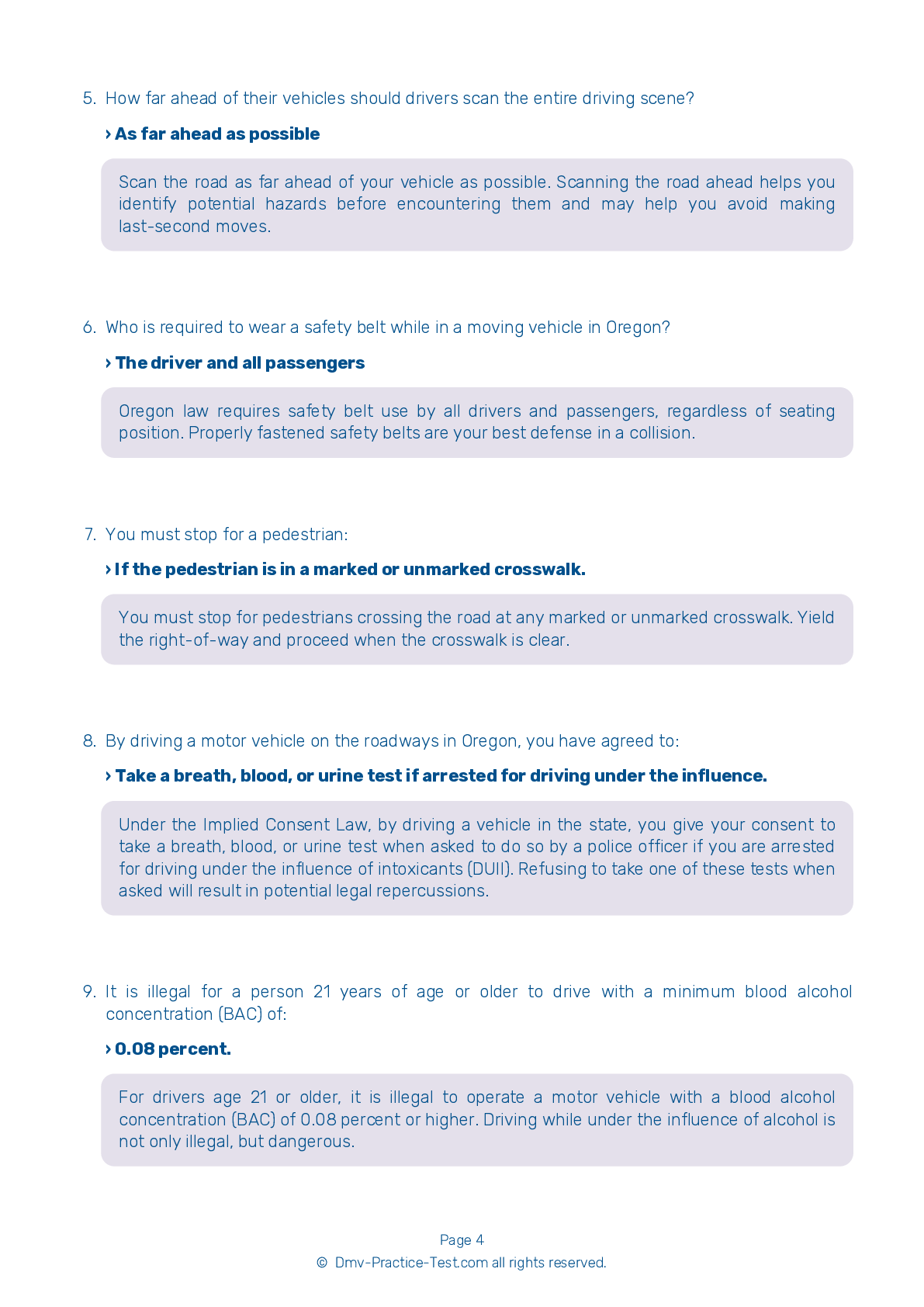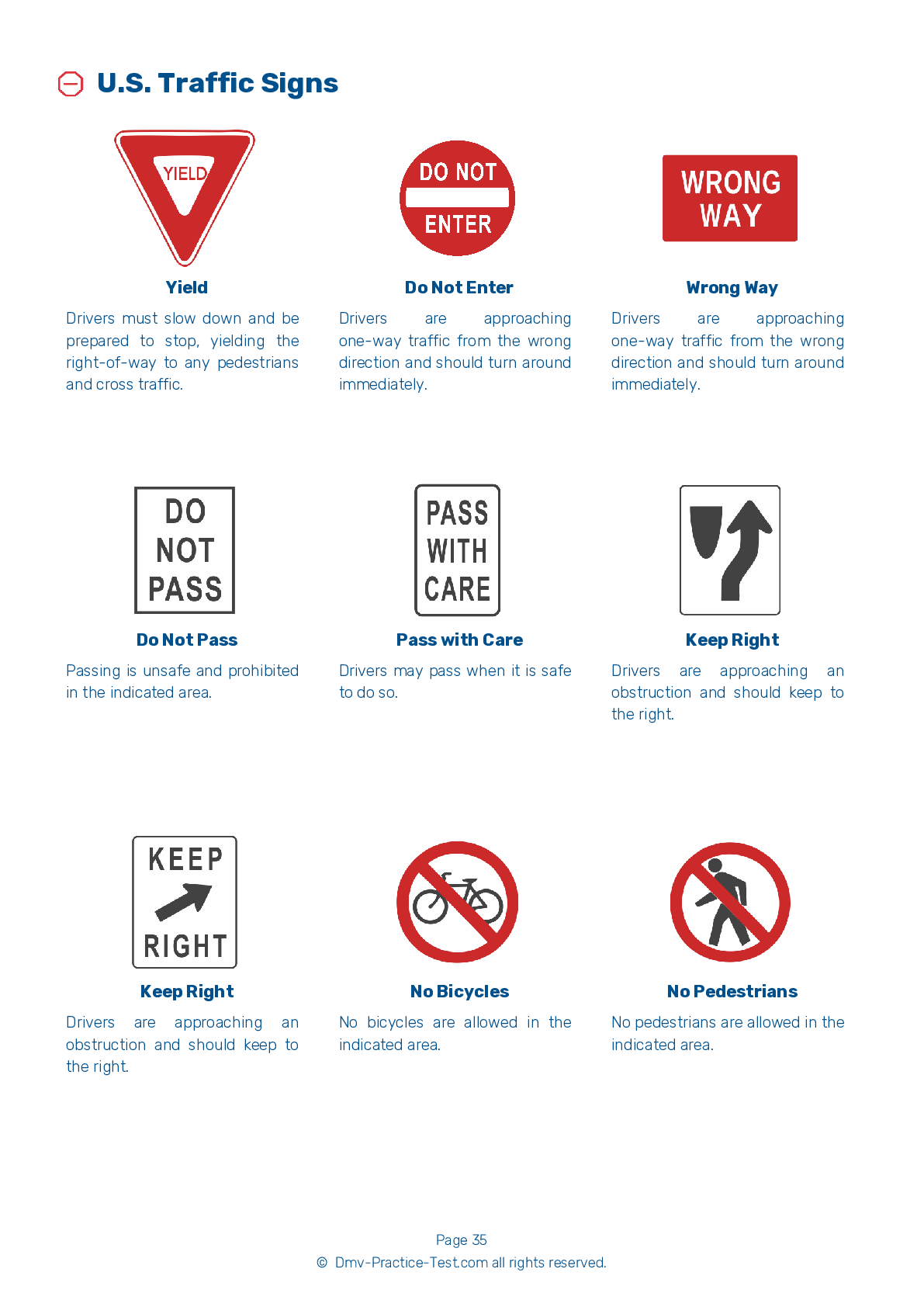FREE Oregon DMV Practice Test #3 Page 3 of 5
The practise exams for the Oregon DMV have been updated for January 2025. It includes questions based on the most important traffic signals and regulations for 2025 from the Oregon Driver Handbook. To study for the DMV driving permit test and driver's licence exam, use actual questions that are very similar (often identical!) to the DMV driving permit test and driver's licence exam.
Each question on the practise exam has a tip and explanation to help you recall the ideas. Questions about traffic rules, traffic signs, and driving statutes, as well as knowledge from the Driver Handbook, will be included in the written portion of the official Oregon DMV test.
You must properly answer 28 of the 35 questions to receive a passing mark. Use the Oregon Department of Motor Vehicles' practise exam to help you prepare for your instruction permit or driver's licence.
The DMV exam is offered in a variety of languages.
Using any form of testing help will result in an automatic fail, and the DMV may take further action against your driver's licence, so avoid it.
15 . A yellow and black diamond-shaped sign:
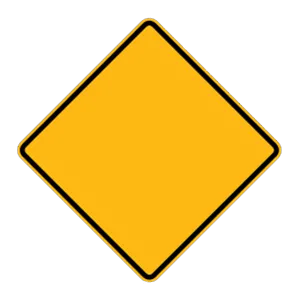
Warning signs, which tell you about conditions on or near the road ahead, are usually diamond-shaped with black symbols or words on a yellow background.
16 . A steady green light at an intersection means that you:
A steady green light means you may drive through the intersection if the road is clear. You may also turn right or left on a steady green light unless a sign prohibits the turn. When turning, you must yield to other vehicles and pedestrians within the intersection.
17 . You must stop for a pedestrian:
You must stop for pedestrians crossing the road at any marked or unmarked crosswalk. Yield the right-of-way and proceed when the crosswalk is clear.
18 . If an oncoming driver is heading toward you in your lane, you should:
If another vehicle is approaching you head-on in your lane, you should first honk your horn to attract attention. If the other driver does not move over, try to escape to the right. If you swerve left and the other driver corrects at the last instant, you will still crash. If a collision is unavoidable, brake firmly and steadily. Every mile per hour you slow down will reduce the impact.
19 . This sign means:
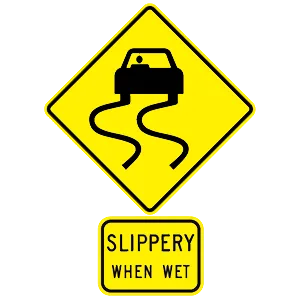
Warning signs are usually diamond-shaped with black markings on a yellow background. They alert drivers to upcoming hazards. This sign warns drivers to be extra careful when the pavement is wet because the road may become slippery, making vehicles more difficult to control.
20 . Certain highway signs require drivers to obey an indicated instruction. Such signs are known as:
Regulatory signs require drivers to obey an indicated instruction. Failure to comply is subject to penalty.
21 . This sign means:
